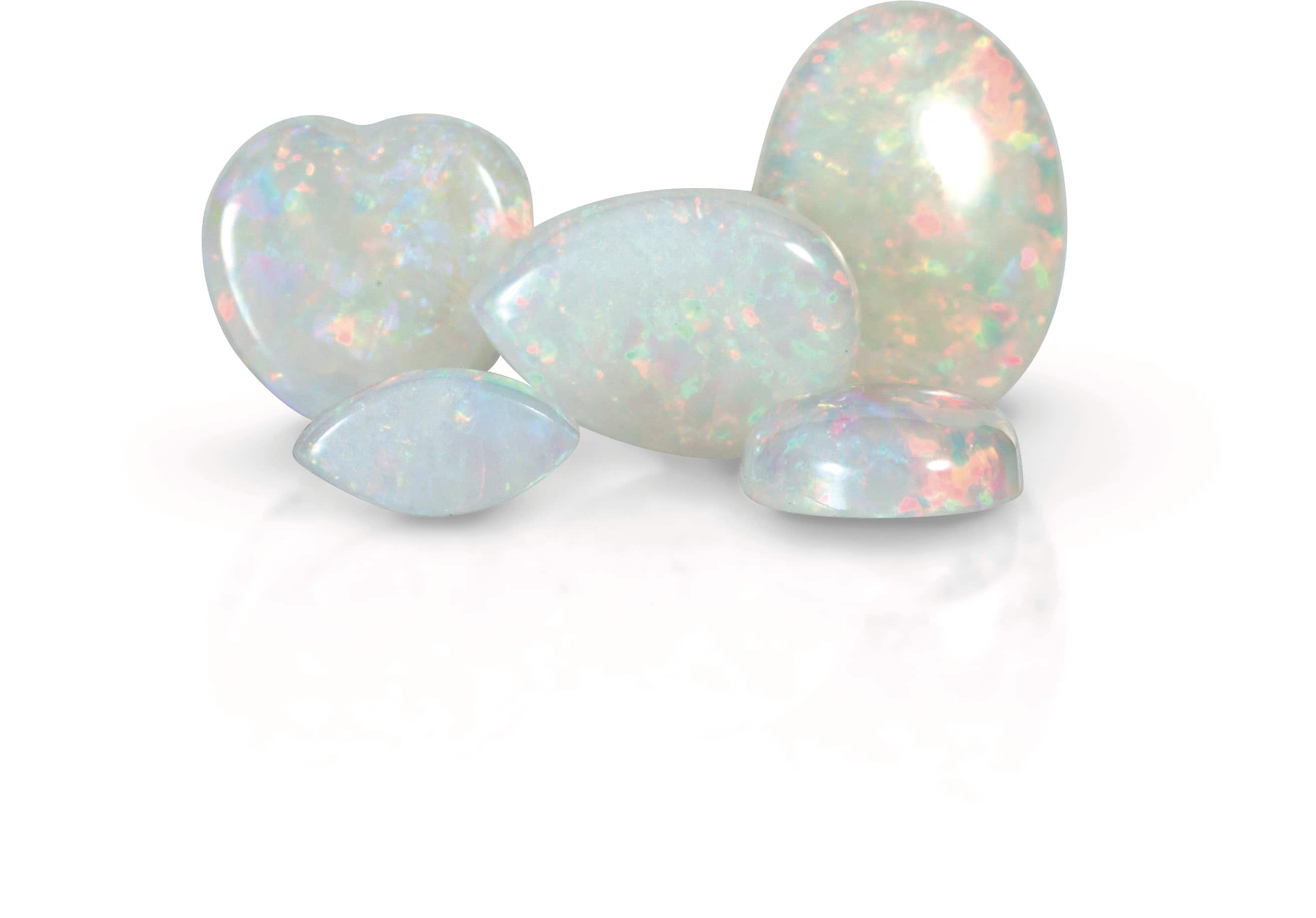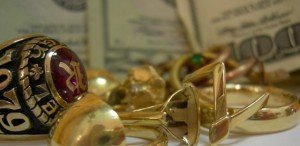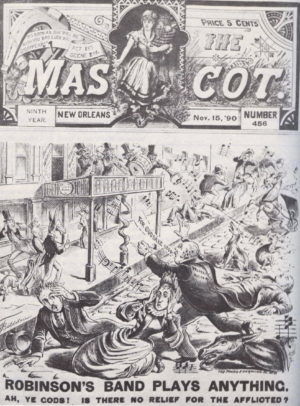It is spooky season and that means it is the month of the opal and tourmaline. October babies get to choose which gemstone speaks to them. Both are vibrant with an array of sparkling colors.
Opal is found mainly in Australia. Seasonal rains in the outback cause waters to soak in underground rock. This causes dissolved silica (compounds of silica and oxygen) to move downward. The water then evaporates, leaving solid deposits of silica behind in the cracks of rocks. Silica then forms opal. There are two categories of opals, precious and common. To be a precious opal, the stone must have colors called Play-of-color. There are many types of opal. White opal is translucent or semi-translucent with play-of-color. Black opal is translucent or opaque with play-of-color. Fire opal is transparent or translucent with no play-of-color, also known as Mexican fire. Boulder opal is translucent or opaque with play-of-color, rock fragments become part of the finished piece. Crystal/Water opal is transparent or semi clear, this opal has the best play-of-color.
Opals are a magical gemstone. An Arabic legend tells the story of how opals fell from the sky in lightning bolts. But Australian aborigines believed the creator of opals came down a rainbow leaving the colorful stone where his feet hit the ground. Opals were believed to be lucky, during the Middle Ages opals were said to possess the powers of every stone it cast a color of. The luck of the opal was then fired down when Sir Waltr Scott wrote the book Anne of Geirstein. It was the story of an enchanted princess who had an opal that changed colors with her mood. The opal was touched with holy water and lost its powers. The princess died soon after. This story caused opals to be associated with bad luck. When Australia found abundant deposits of opal the gemstone was once again lucky.
Another October birthstone is tourmaline. Tourmaline can be identified from its chemical properties. The gemstone shares a complex system of silicon, aluminum, and boron. Tourmaline’s chemical composition determines what species it is. The different species are, elbaite, liddicoatite, dravite, uvite, and schorl. Tourmaline has a wide variety of colors, more than any other gemstone. Rubellite is pink, red, purplish red, orangy red, or brownish red. Indicolite is dark violet blue, blue, or greenish blue. Paraiba is a vibrant violet blue, greenish blue, blue from Brazil. Chrone tourmaline is vibrant green. Parti-colored is multi colored, mainly seen as pink and green. Watermelon tourmaline is pink with green around the outside.
It is believed from an Egyptian legend that tourmaline got its color from passing through a rainbow on a journey up from the center of the Earth. Tourmaline is said to have healing powers. It is known as the “receptive stone”, meaning it is soothing, calming, and magnetic. It also promotes meditation, spirituality, wisdom, and mysticism. Tourmaline was valued by alchemists, and believed to be related to the philosophers stone because of its pyroelectric effect. Tourmaline was a substance that granted enlightenment, gave power over spiritual affairs, reconcile opposites, and turn base metal into gold. In Africa, tribes use them to protect against danger.
Opal and tourmaline are very powerful and colorful gemstones. If you need some luck try wearing an opal and if you need soothing and wisdom try a tourmaline. At Anne Dale Jewellers, we have high quality stones that are sure to catch eyes. Come on down to harvest in the luck of our opals and calming effects of tourmaline.

Monograms Jewelry Returns to New Orleans
As Christmas approaches, store owners have certain price-point driven brands, designers and jewelry types they’re confident will sell well. But the common underlying theme for this Christmas season is diamond pendants as top sellers. Estimates for average tickets of all jewelry sales this holiday season will range from $250 to $500, with a sweet spot from $325 to $375.
Anne Dale Buys Gold
Anne Dale Buys Gold a trusted jewelry evaluator for over 30 years. She knows the second hand market for gold, silver and diamonds… it’s more important to get the right price than a quick payment that may not be for the correct value.
Power of One
The perfect inspirational gift for that special person as they reach for the stars.
I am only one, but still I am one. I cannot do everything, but still I can do something; and because I cannot do everything, I will not refuse to do something that I can do.
An engraver has long been a craft associated with fine jewelry, behind the many scenes of Anne Dale Jeweler is my incredible and talented husband, Mike Dale. He is the Master Jeweler responsible for many of our one-of-a-kind creations. Over thirty years his unique and rare skill as a goldsmith and diamond setter reflects the rich history of his New Orleans family. A family of master artist and New Orleans engraver.
In the early 1900’s, Arthur C. Dale (Michael’s grandfather) a photo-engraver was the shop foreman for the New Orleans Engraving and Photo-etching Company. French artist and master engraver Francois Bildstein (1855-1935) (Michael’s great-great-uncle) began training Arthur as an apprentice at the young age of sixteen in 1899.
Bildstein is credited for his art work and engravings in “The Mascot” a historical New Orleans publication from 1882 to 1897.
 Bildstein’s images documented post civil war New Orleans, today his photo-engravings are part of The New Orleans Historical Collection one engraving is considered to be the first image of a jazz band while another depicts the largest mass lynching in United States history after the killing of New Orleans Police Chief Hennessy.
Bildstein’s images documented post civil war New Orleans, today his photo-engravings are part of The New Orleans Historical Collection one engraving is considered to be the first image of a jazz band while another depicts the largest mass lynching in United States history after the killing of New Orleans Police Chief Hennessy.
Local artist, photographer and history buff Sally Asher has done a series of lectures on “The Mascot” and Francois Bildstein’s engravings as she prepares to write a book on the subject. She presented Michael with an original framed silk screen of a Francois Bildstein drawing from the 1800’s of a young lady on a bike riding down Saint Charles Avenue.




